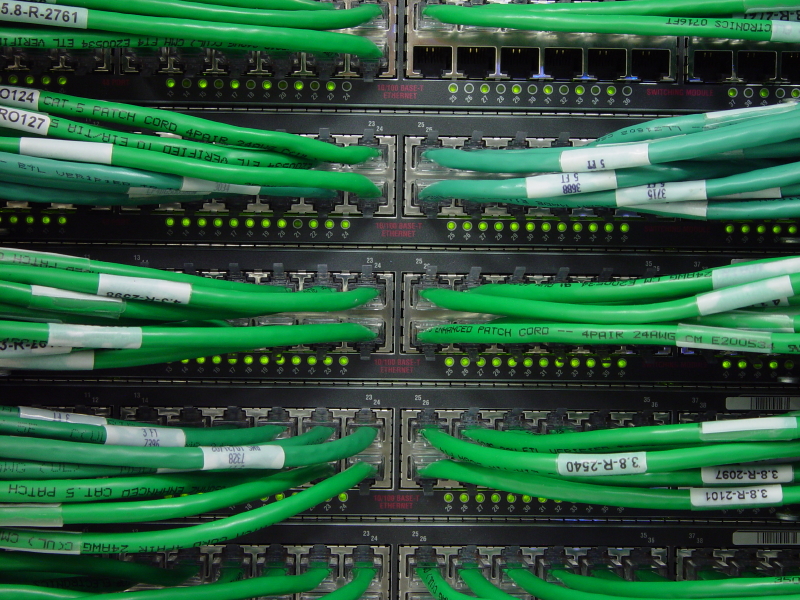Automated Infrastructure Management
By: LeaAnn Carl

Automated Infrastructure Management (AIM) automates discovery and documentation of network cabling infrastructure in the data center, central office or commercial building. By adopting an AIM solution, network administrators can streamline provisioning and monitoring of network connectivity, gain an accurate view of what is connected where in the network, reduce downtime by real-time notification of unplanned changes and produce up-to-date reports on the state of the infrastructure.
In this article, we’ll look at the definition of AIM, discuss its applications, and consider some features to look for when choosing an AIM system.
The problem with manually documenting the network
Today, about 90 percent of IT networks are documented using manual tools like spreadsheets, which are laborious and prone to human error - which can be costly. Network technicians often spend as much time updating and maintaining this manual documentation as they do connecting things and resolving issues. The risks associated with inaccurate documentation can make troubleshooting and change management time-consuming and potentially expensive.
For example, suppose a company hires a new employee and needs to provide a work space for that employee. The request is sent to the help desk and a ticket is created. Then a work order is sent to the technician who is dispatched to find out if an outlet is available in the desired location. Even if documentation exists, the technician needs to go there to see if there is an available outlet to double-check and verify if existing documentation is accurate.
Next, the technician has to contact the network team and ask it to provide or assign a port, and the network team then has to determine what ports are available. The help desk enters the information into the work order and hands it to the technician.
Finally, the technician has to figure out where to make the connection. The technician goes to the wiring closet and finds that all 48 ports on the switch are already connected, although it’s not clear if all of the ports are actually in use. The next step is either to start the procurement process for a new switch or else manually determine if some of the connected ports are no longer in use and can be re-used.
From start to finish, this process can often take a long time.
What is AIM?
Automated Infrastructure Management (AIM) systems are an intelligent approach to physical layer management that gives network managers unprecedented control over their networks. An AIM system can reduce the time it takes to deploy new assets, which in turn saves on operational costs. Cost savings over the lifespan of the infrastructure can outweigh the initial capital investment of the AIM system.
AIM systems have been around for years; but in the latter half of 2016, the International Organization for Standardization (ISO) and International Electrotechnical Commission (IEC) are expected to ratify standard ISO/IEC 18598, which describes the functional requirements and operations along with the data framework and API for AIM systems.
An AIM system consists of intelligent hardware and software components that are designed to detect the insertion and removal of patch cords. The software collects and stores the resulting connection information, relates that connection information to cabling connectivity information, and relates the cabling connectivity information to information from other sources (i.e., Layer 2-7 network management systems) through application program interfaces (APIs). AIM systems can also provide the capability to discover networked devices and to pinpoint their physical location within facilities.
With an AIM system in place, the network administrator knows exactly what is connected where. He or she has a real-time view of the physical network connectivity and the ability to generate alerts when an unplanned connection or disconnection occurs. The system also provides a work order management system that generates trouble tickets and directs a technician to the exact location of the problem. Finally, the AIM system generates reports that show what is connected where.
Applications for AIM Systems
AIM systems improve several aspects of data center or central office operations, such as:
Change management – You can’t manage what you can’t see; and without an AIM system, the network manager can’t see the physical layer of the network. By capturing information about every physical connection and relaying it, through an API, to higher-level network management systems, the AIM system provides an accurate, real-time view of the physical network connectivity and can issue alarms when an unplanned or unauthorized change occurs.



















